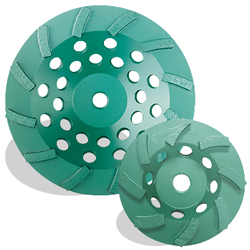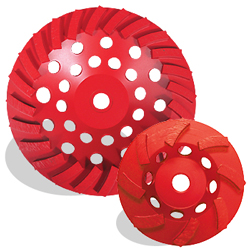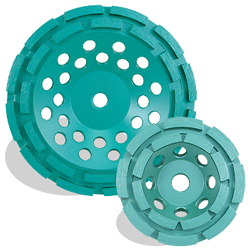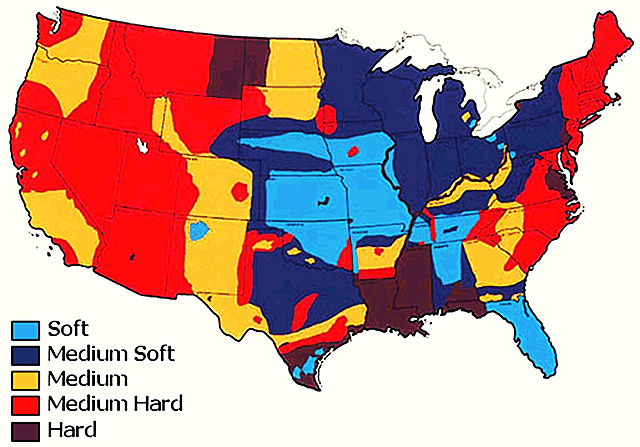
Aggregate Hardness, Diamond Bond
- Soft, Hard
- Medium Soft, Medium Hard
- Medium, Medium
- Medium Hard, Medium Soft
- Hard, Soft
Concrete Grinding & Polishing – The Benefits
- Durability: Polished concrete floors are very robust, which is essential in high traffic areas. They are resistant to staining, chipping, and discoloration, which prevents the need for frequent waxing or resurfacing.
- Low Maintenance: Grinding and polishing concrete floors have a longer life than other surfaces and require little maintenance. Polished concrete floors require refinishing every 5 to 10 years to restore its shine and beauty.
- Low Cost: Concrete grinding and polishing is aesthetically pleasing to the eye. It creates a beautiful surface that resembles stone or other costly materials and its process is quick and affordable when compared to other flooring options.
- Aesthetic Appeal: Concrete grinding and polishing accentuates the natural beauty of concrete. When concrete stains are applied over polished concrete, they provide the look of expensive polished stone similar to marble or granite for many years with little upkeep.
- Eco-Friendly: Concrete grinding and polishing is an environmentally friendly solution because its installation produces low amounts of waste, its longevity, and it improves indoor air quality by reducing or eliminating dust, mold, and mildew.
- High Gloss Surface: Grinding and polishing concrete floors creates a high gloss surface that reflects light, which creates a safer environment and reduces lighting costs in large facilities, warehouses, and factories.
Concrete Polishing 101 – The Basics
Flooring professionals have a general rule: Double the diamond (metal segment) grit size for each subsequent pass. For example, start with a very coarse metal bond (16 or 32 grit) diamond, then with a 60 grit diamond and ultimately with a 120 grit.
Metal Bond
Refers to the segments found on the diamond grinding cup wheel or trapezoid or fast change plate, which are simply metal blocks containing the artificial diamonds that are embedded within. These segments range from 10 grit to as fine as 250 grit. Note: the lower the grit, the more coarse or aggressive it is and conversely, the higher the grit, the less aggressive or fine it is. Its distinction is very important to consider when planning a “resurfacing project.”
Thereafter, start with resin pads. For example, one would being with a 50 grit diamond (resin pad). Depending on the project and preference, the operator may start with 100, then progress upward to 200, 400, 800, 1500, and finally 3000 grit.
Resin Bond
Generally, when polishing concrete, it is necessary to change to resin bond pads which are softer and less aggressive. Resin bond pads range from 50 grit up to 10,000 grit. Polished concrete is usually achieved at 3,000 grit resin pads.
Concrete grinding removes the top layer of the surface, which exposes air holes. These holes must be filled prior to the hardening process. Once they’ve been filled, then the polishing process can commence.
Filling the Holes
Fill the holes with an “acrylic tile adhesive” type of product mixed with either the grinding dust or cement powder which is hand scraped across the floor using a trowel or use rubberized adhesives, which can be sprayed ahead of the grinder. This step is entirely subjective in which we will leave entirely up to the operator.
The final, but essential step is hardening the surface. Polished concrete floors usually have the surface hardened with a chemical prior to subsequent concrete passes (i.e., second, third or fourth). The chemical soaks into the floor to a few millimeters (up to half an inch) and causes a chemical reaction that makes the floor harder and easier to polish to a high finish and ultimately durable and aesthetically pleasing to the eye.
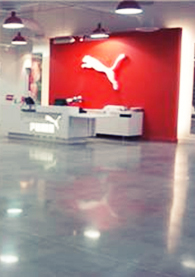
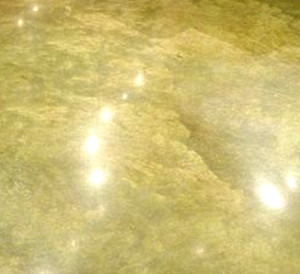

Choose the Right Diamond Cup Wheel for Concrete Grinding
Aside from being fast and relatively less quite than walk-behinds, it’s also economical. A cup wheel should be chosen based on the hardness and condition of the concrete. Simply put, if the concrete is hard, then you’ll need a cup wheel with a “soft bond.” Conversely, if the concrete is soft, you’ll need a cup wheel with a “harder bond.”
The Logic
Diamonds become dull when grinding hard concrete. Soft bond cups wear down with the blunt diamonds earlier and expose them to participate in grinding the hard concrete. Harder bond cups wear slower, holding the diamonds longer making better use of the diamonds and prolonging the life of the cup wheel.
Coarse Grinding vs. Fine Grinding
Coarse grinding is the initial grinding process to open up the floor or expose the aggregate. Fine grinding is known as polishing. That said, both processes require different diamond cup wheels.
In coarse grinding, the bond should be softer and the diamond grit should be bigger at around (30 – 50 grit) as the diamonds are more prone to become blunt. Alternatively, when fine grinding a.k.a polishing, the diamond grit should be around (80 – 120 grit). The goal at this stage is not to be too aggressive on the floor’s surface and smooth out any residual grooves from the previous coarse grinding.

